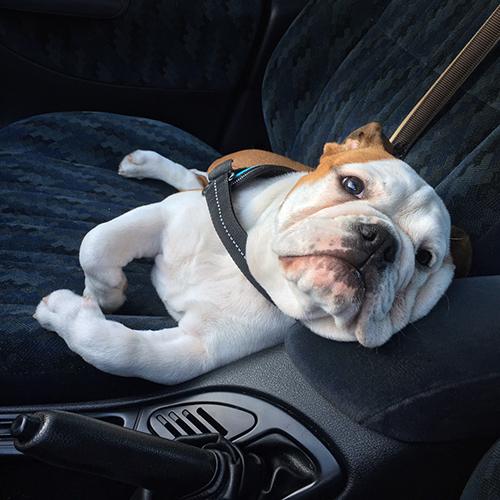Staying Alert While Driving

The movie just ended and it's time to head home. It's a beautiful night: the lightning bugs fade in and out of site along the tree line and the crickets sing to each other from the bushes. It's not so bad that you made the late showing of the film: after all, the weather is nice and you're still excited from the movie. Surely, it'll be safe to drive. Right?
Not necessarily. The longer you spend in the car, and the later you take to the road, the more likely you will be engaging in drowsy driving. Drowsy driving is any attempt to operate a motor vehicle while physically or mentally fatigued. According to the National Highway Traffic Safety Association (NHTSA), up to 1.2 million crashes could be caused by drowsy driving each year. With 9.5 percent of all crashes, and 13 percent of commercial motor vehicle crashes, being caused by drowsy driving, it is a real danger to get behind the wheel if you have had a lack of adequate sleep, extended work hours or strenuous activity.
You can tell if you're too fatigued to drive if:
- You're having trouble keeping your eyes open
- Your vision is blurry or you keep yawning
- You're straying out of your lane
- You're having trouble remembering the last few minutes of your drive
The fact of the matter is that sometimes you're out late, you have to get home, and public transportation is not an option. How can you make sure you stay alert while driving?
- Get enough sleep before driving. The National Sleep Foundation recommends adults (age 18–64) receive 7–9 hours of sleep each night and teenagers (age 14–17) receive 8–10 hours of sleep each night. The National Safety Council (NSC) reports that driving after being awake for more than 20 hours is the equivalent of driving with a blood-alcohol concentration of 0.08%, the U.S. legal limit. If you didn't sleep last night, ask a friend to drive you home; don't get behind the wheel yourself. Make sure you're fully awake before driving; the Federal Motor Carrier Safety Administration (FMCSA) reports that dangerous driving is more likely to occur in the first hour of driving, due to the effects of sleep inertia.
- Stay off the road between 12 a.m. and 6 a.m. Your circadian rhythms will make your body think that you should be sleeping during these hours, even if you feel wide awake or are driving on well-lit roads. FMCSA also recommends staying off the roads between 2 p.m. and 4 p.m., because that's another time when your body will be naturally drowsy.
- Eat healthy and on schedule. An irregular eating schedule can make you more likely to experience fatigue. Eating heavy meals before driving can make you drowsy, while skipping meals can interfere with your sleep or affect your judgment and attention while driving.
- Take a nap. If you do feel sleepy while driving, pull into a rest stop and take a 20-minute nap. The respite could do wonders for your alertness, although it won't replace a full night's sleep. If you still have a long way to go, commit to getting a full night's sleep.
- Use the buddy system for long drives. Travel with a partner who can take over driving when you start to feel sleepy. Even better, set a schedule and switch drivers every two hours. While you drive, your buddy can nap, and vice versa.
- Don't drive if you're on medications that make you drowsy. Pay attention to the labels on your medications and don't drive if the label warns that you could experience drowsiness. Also use your own judgment — if you know that you get drowsy after consuming a substance, don't drive if you've consumed it.
- Don't rely on alertness tricks. Alertness tricks, like drinking coffee, turning up the radio and opening the window, could jolt you into wakefulness for a short term, but they won't last long. In fact, the Sleep Foundation and AAA question how effective those tricks actually are. As FMCSA points out, regular caffeine users might experience diminished effects caffeine with frequent use. Ultimately, if you really need your sleep, these tricks won't be enough to keep you alert.
- Shop for cars with crash avoidance technologies. Many highways in New Jersey and Pennsylvania have rumble strips along the side of the road to alert you if you're drifting out of your lane. Newer cars might also have crash avoidance technologies like drowsiness alerts and lane departure warnings which track how often you move between lanes. Consider these features if you have a job that keeps you up or out late.
You're in the last stretch of the road trip home, looking forward to seeing your family … as soon as you get some sleep. It's dusk and you've been driving for three hours straight, but you're more than halfway there, and if you stop now you'll need to find a hotel. The highway stretches for miles with little civilization in site. You'll be able to make it tonight. You can keep driving. Right?
Getting to your location is never going to be as valuable as your life. It's much safer to find a spot to rest and get your sleep than it is to push yourself for the last stretch of your trip. The most effective tool to reduce drowsy driving is sleep. By getting your 7–9 hours of sleep the night before a drive, you will be much more alert on the road.



